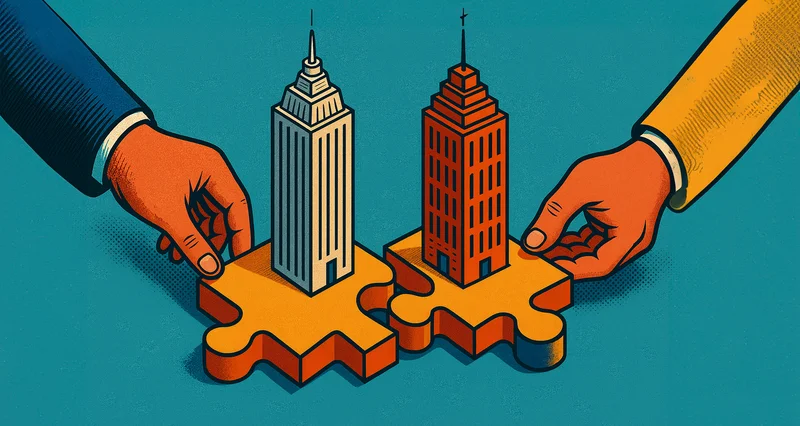When the news broke that Comerica was being acquired, my first thought wasn't about the $10.9 billion price tag or the stock fluctuations. It was about the name. Specifically, the name plastered in giant letters across the scoreboard at the home of the Detroit Tigers. I pictured the roar of the crowd on a warm summer evening, the crack of the bat echoing under the lights, all of it happening inside a place called Comerica Park. It’s a physical anchor, a piece of the city's very identity.
But this merger with Cincinnati’s Fifth Third Bancorp isn't just a business deal; it's the final, quiet confirmation of a ghost story that’s been unfolding for nearly two decades. Comerica, the institution, hasn't really been in Detroit since it moved its headquarters to Dallas back in 2007. The name on the ballpark was a memory, a legacy. Now, the ghost is finally being exorcised, and we're left to ask a much bigger question: What defines a place when its most visible symbols are just variables in a corporate equation calculated a thousand miles away?
This is the kind of tectonic shift that reminds me why I got into this field in the first place—to understand the invisible systems that shape our visible world. And this story is a masterclass in that dynamic.
The Texas Algorithm
Let's be brutally honest. As University of Michigan professor Erik Gordon pointed out, this merger isn't about Michigan. It’s about Texas. Fifth Third is looking at the booming markets of Dallas, Houston, and Austin and seeing a gold rush. They have a tiny presence there, and Comerica—the Texas bank—gives them an instant, massive foothold. Michigan, with its deep history and its 143 Comerica branches, is essentially the incredible bonus prize that came with the acquisition.
Think of it like the great railroad consolidations of the 19th century. Moguls weren't just buying up random tracks; they were building powerful, continent-spanning trunk lines to connect the most valuable economic hubs. In the process, countless local spurs and regional lines were absorbed, rebranded, or deemed redundant. This is the same logic, just played out with data packets and deposit shares instead of iron and steam. Fifth Third is building its high-speed rail line to the booming economy of the Sun Belt, and Detroit’s legacy network is now part of that larger system.

When executives talk about their "data-driven branch rationalization strategy," it sounds clean and efficient. Let me offer a self-correction here—in simpler terms, it means an algorithm will decide which of two nearby branches, one blue with a Comerica logo and one blue with a Fifth Third logo, gets to survive. It’s a decision based on transaction volumes and trade area analysis, a cold calculus that will inevitably erase familiar street corners and neighborhood landmarks. Is this process logical? Absolutely. But does it account for the human sense of place that’s woven into the fabric of a community? And what happens when the logic driving the future of a Detroit neighborhood is optimized for growth in Austin?
A Name on a Leash
Which brings us back to the ballpark. That name—Comerica Park—was a promise. A 30-year, $66 million deal signed before the stadium even opened, later extended through 2034. It was a statement that even with its headquarters gone, a piece of the bank’s soul remained in its birthplace. You could stand on Woodward Avenue, look at that sign, and feel a connection to a 175-year-old Detroit institution.
But that connection was always more fragile than we admitted—it’s the slow, almost imperceptible drift of corporate gravity away from a physical place until one day you wake up and realize the name on the building is owned by a bank from Cincinnati that bought a bank from Dallas that was once, a long time ago, a bank from Detroit. It’s a dizzying matryoshka doll of modern capitalism.
The joint statement released by the banks is a perfect artifact of this moment. They promise "thoughtful decisions that reflect our shared values and long-standing community ties." It’s beautifully written, but what does it truly mean? The most powerful value expressed in this $10.9 billion deal is the pursuit of market share in Texas and California. That's the core mission. The name on a stadium in a legacy market is, by definition, a secondary concern.
This isn't a criticism; it's an observation about the nature of modern capital. It is fluid, placeless, and relentlessly logical. But we, as people, are not. We are tied to places, to memories, to the sensory experience of standing in a crowd and cheering for the home team in a stadium whose name we’ve said a million times. What happens when the name becomes a temporary lease, subject to the strategic priorities of a boardroom hundreds of miles away? Do we just learn to cheer for whatever logo is on the scoreboard this season?
Place is Just a Variable Now
This isn't just about a bank merger. It's a profound statement about the 21st century. We are watching the digital, abstract nature of a corporation completely overwrite the physical, concrete identity of a landmark. The soul of Comerica has been in Texas for years; the merger is just the moment the physical world is catching up, forcing the signs and symbols to align with the invisible flow of capital. What happened to Comerica Park is a blueprint for the future of our cities, where our sense of place will be increasingly shaped by entities whose hearts and strategic interests lie somewhere else entirely. The question for us isn't how to stop it—we can't—but how we build a new, more resilient sense of local identity that isn't dependent on the name on the wall.
